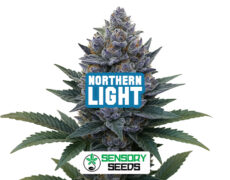Published on: 09/01/2023
Cannabicromene: what you should know about this cannabinoid
When it comes to cannabis, CBD and THC are usually mentioned, a bit as if they were two antagonists within the same story, but few know about CBC, or cannabichromene.
If you’ve never heard of it and want to know more, you’re in the right place.
In this article, we will dive deeper into the matter and discuss the potential medical benefits of this cannabinoid.


What is cannabichromene or CBC?
CBC, or cannabichromene, is a cannabinoid found in the cannabis plant, alongside better-known cannabinoids such as CBD and THC.
Unlike THC, CBC is non-intoxicating, as it does not bind well to cannabinoid CB1 receptors in the brain. However, it binds to other receptors such as TRPV1 and TRPA1, both of which are involved in pain perception. CBC is also known for its ability to increase levels of anandamide, an important natural endocannabinoid in the body, when it activates these receptors.
What is it for?
Due to its interaction with the body’s natural endocannabinoid system and ability to increase anandamide levels, CBC may be beneficial:
- in the fight against cancer;
- to block the pain and inflammation caused by collagen-induced arthritis;
- as a neuroprotective for conditions such as Alzheimer’s disease;
- to counteract oxidative stress;
- for the treatment of acne and depression (when used together with CBD and THC).
But let’s look into it further.
Read also: Hemp oil: how it is produced and what are the differences with CBD oil
These are the possible uses of CBC in the medical field
Early research shows that CBC can be helpful in treating several health conditions we mentioned earlier. While results on the benefits of CBC are still lacking, the research is promising.
So, here’s what some of the current scientific evidence suggests about this cannabinoid.
Depression and anxiety
CBC could be extremely effective in treating anxiety and depression and when combined with THC and CBD to provide an entourage effect of mood-enhancing properties. CBC and CBG may even be more potent than the more famous cannabinoids (thus THC and CBD) in treating anxiety and depression, but more research is needed to corroborate the mounting anecdotal evidence.
Pain and inflammation
CBC has been shown to be potentially helpful in pain management; moreover, it can also help desensitize some channels and can combine with THC and CBD to create a particularly powerful anti-inflammatory. Finally, it can affect receptors involved in pain sensing and body heat regulation.
Cancer
A study on the anticancer effects of cannabinoids other than THC found that CBC is the second most effective cannabinoid at inhibiting the growth of new cancer cells. This study found that CBG and CBC are particularly potent anticancer compounds.
Part of the CBC’s effectiveness in defeating cancer appears to be related to its ability to increase the amount of anandamide in the body. As we anticipated at the beginning of this article, anandamide is a neurotransmitter that plays an important role:
- in pain;
- in the mood;
- in appetite;
- in memory;
- in fertility;
- in other crucial functions.
Patients suffering from estrogen positive breast cancers may need to ensure a certain level of anandamide in the system and often resort to taking THC for this. CBC and CBD can maintain the properties of THC but unlike the latter they are not promoters of the estrogens co-responsible for the tumor.
But that is not all.
CBC has also been found to be able to fight breast cancer in vitro and in vivo (in a living organism), giving good hope that cannabichromene and other cannabinoids can prevent the development of cancer.
Neurological conditions
On top of that, CBC has shown particular promise as a compound that promotes healthy brain function.
A 2013 study showed that cannabichromene has a positive effect on cells responsible for developing the brain of children and plays an important role in adult learning and memory.
The therapeutic properties of CBC also make it potentially very useful in the treatment of neurological diseases and brain pathologies such as traumatic brain injury (TBI), multiple sclerosis (MS), Alzheimer’s disease and Parkinson’s disease.
Acné
Finally, CBC has potent anti-inflammatory properties and, like CBD, suppresses excessive lipid production in the sebaceous (oil-producing) glands. And, in fact, blockage of the sebaceous glands is implicated in the development of acne.


Cannabichromene: Are there any side effects?
At present, there is limited evidence regarding the possible side effects of this cannabinoid. We have seen that CBC undoubtedly has beneficial properties and promising potential in the medical field. However, it is important to reiterate that studies are still ongoing and these above effects need further investigation.
That said, no side effects of note have been reported to date, as CBC is not addictive like THC, but is ‘harmless’ like cannabidiol.
Read also: Hotboxing, a curious practice you’ve probably never heard of.
Conclusions
In this article we talked about cannabichromene or CBC, a cannabinoid less known than cannabis but with multiple properties. However, its potential needs further study and analysis but, as we have seen, the results appear to be promising.









